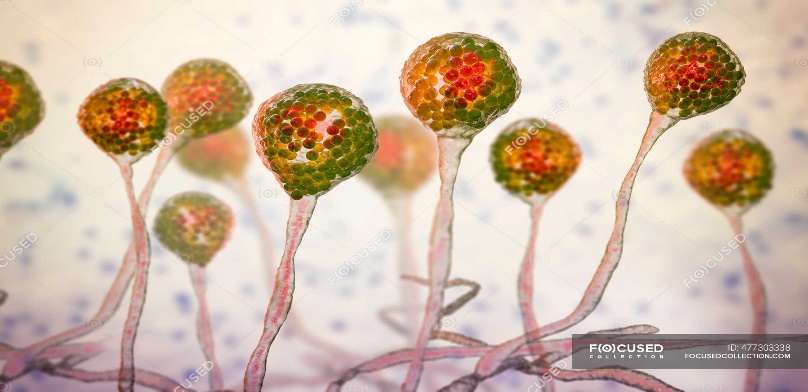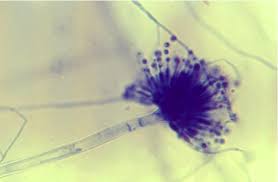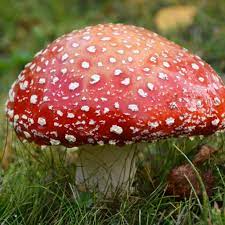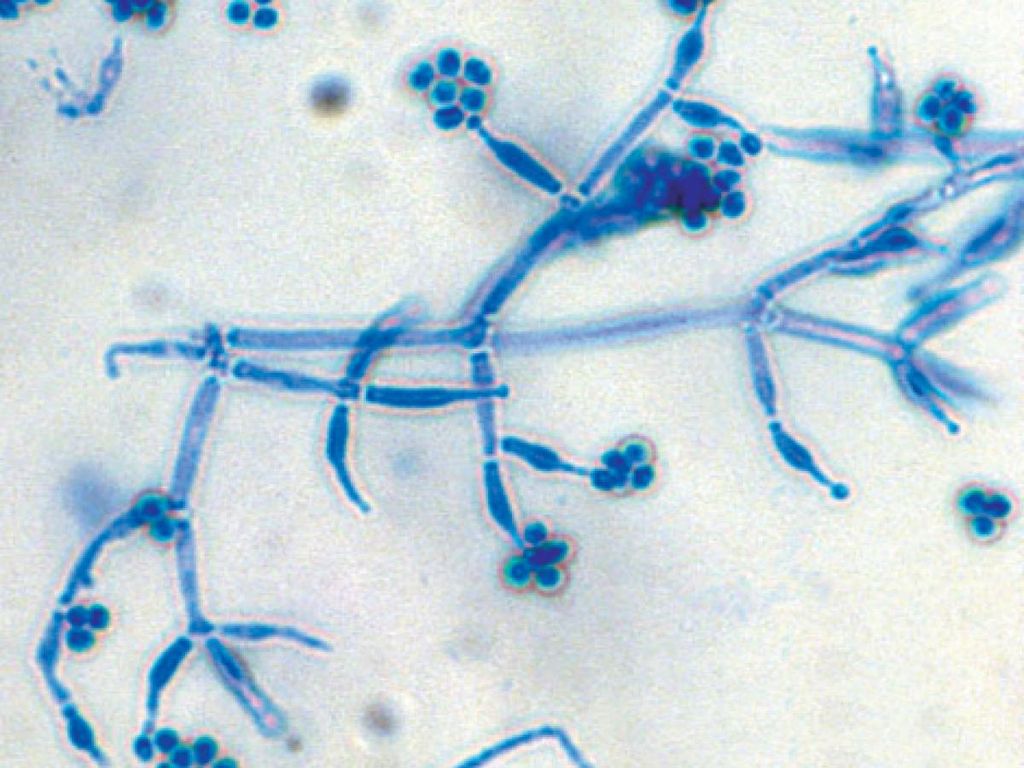Kingdom Fungi
Fungi are eukaryotic organisms that include yeasts, molds, mushrooms as well as other microbes.Fungi are a distinct kingdom of heterotrophic creatures. They have a wide range of forms and environments. Fungi can often be observed on stale bread and rotten fruits. Toadstools and the common mushroom that we eat are both fungi. A parasitic fungus causes white patches on mustard leaves. Some unicellular fungi, such as yeast, are utilized in the production of bread and beer. Other fungi produce illnesses in plants and animals; Puccinia, which causes wheat rust, is a good example. Penicillium, for example, is a source of antibiotics. Fungi are widely distributed and can be found in the air, water, soil, and on animals and plants. They thrive in warm, humid environments.Mycology is the branch of biology concerned with the study of fungi.
Fungi are filamentous, with the exception of yeasts, which are unicellular. Their bodies are made up of hyphae, which are long, slender thread-like structures. Mycelium refers to the network of hyphae. Coenocytic hyphae are hyphae that are continuous tubes filled with multinucleated cytoplasm. In the hyphae of others, there are septae or cross walls. Fungi's cell walls are made up of chitin and carbohydrates.
Saprophytes are fungi that are heterotrophic and absorb soluble organic materials from dead substrates. Parasites are organisms that rely on live plants and animals for their survival. They can also live as symbionts, forming lichens with algae and mycorrhiza with the roots of higher plants.
Fungi reproduce via vegetative processes such as fragmentation, fission, and budding. Spores known as conidia, sporangiospores, and zoospores are instrumental in asexual reproduction, while oospores, ascospores, and basidiospores are responsible for sexual reproduction. Fruiting bodies are structures that produce different types of spores.
The three phases of the sexual cycle are as follows:
(i) Plasmogamy, which is the fusion of protoplasms between two motile or non-motile gametes.
(ii) Karyogamy, which is the fusion of two nuclei.
(iii) In a zygote, meiosis results in haploid spores.
Two haploid hyphae of compatible mating types come together and merge when a fungus reproduces sexually. In some fungi, the fusing of two haploid cells results in the formation of diploid cells right away (2n).
Kingdom fungi can be divided into three groups based on their nutritional needs.
(i)Saprophytic fungus get their sustenance from dead organic matter. Rhizopus, Penicillium, and Aspergillus are other examples.
(ii)Parasitic fungus get their food by living on other living organisms (plants or animals) and absorbing nutrients from them. Taphrina and Puccinia are two examples.
(iii)Symbiotic fungi are those that exist in an interdependent relationship with other species in which both parties benefit. Lichens and mycorrhizae are two examples. Lichens are the result of a symbiotic relationship between algae and fungi. Algae and fungi benefit from each other in this situation because fungi give protection to algae and algae provide carbohydrates for fungi.
The morphology of the mycelium, mode of sporeformation, and fruiting bodies form the basis for thedivision of the kingdom into various classes which are discussed below.
(a) Phycomycetes:
Phycomycetes can be found in aquatic areas and on decaying wood in moist and humid environments, as well as obligatory parasites on plants. Algal fungi are sometimes known as Phycomycetes. They have aseptate coenocytic hyphae that are distinctive. Asexual reproduction occurs via zoospores (motile) or aplanospores (asexual) (non-motile). In the sporangium, these spores are produced endogenously. A zygospore is created when two gametes fuse together. The morphology of these gametes is either similar (isogamous) or distinct (heterogamous) (anisogamous or oogamous). Mucor, Rhizopus (the bread mold), and Albugo(the parasitic fungi on mustard) are other typical examples.

(b) Ascomycetes:
The ascomycetes, sometimes known as sac-fungi, are typically multicellular (e.g., Penicillium) or occasionally unicellular (e.g. Saccharomyces or yeast). These fungi may be Saprophytic, decomposers, parasitic, or coprophilous(growing on dung). Mycelium is septate and branched. Conidia grown exogenously on special mycelium termed conidiophores are the asexual spores. Conidia create mycelium when they germinate. Ascospores are sexual spores that are produced endogenously in sacs similar to asci (singular ascus). These asci are grouped in ascocarps, which are distinct types of fruiting structures. Aspergillus, Claviceps, and Neurospora are some examples. Neurospora is widely utilized in biochemical and genetic research. Many of the members, such as morels and truffles, are edible and regarded as delicacies.

(c) Basidiomycetes:
Mushrooms, bracket fungi, and puffballs are examples of basidiomycetes. They can be found growing in soil, on logs and tree stumps, and in living things. Rusts and smuts, for example, are parasitic plant bodies. The mycelium is septate and branching. Although asexual spores are rare, vegetative reproduction by fragmentation is prevalent. Although there are no sex organs, plasmogamy is caused by the fusing of two vegetative or somatic cells of different strains or genotypes. The dikaryotic complex that results eventually gives rise to basidium. The basidium undergoes karyogamy and meiosis, resulting in four basidiospores. The basidiospores are formed exogenously on the basidium (pl.: basidia). Basidia are arranged in basidiocarps, which are fruiting bodies. Agaricus (mushroom), Ustilago (smut), and Puccinia are some of the most prevalent members.

(d) Deuteromycetes:
In this category, only asexual or vegetative phases of these fungi are known, therefore they are commonly referred to as imperfect fungi. When the sexual forms of these fungi were discovered, they were placed in the appropriate groups. It's also likely that the asexual and vegetative stages were given one name (and were classified as Deuteromycetes), while the sexual stage was given another one (and placed under another class). The fungi were accurately recognized and moved out of Deuteromycetes after the links were discovered. Deuteromycetes were frequently shifted to ascomycetes and basidiomycetes after their perfect (sexual) stages were discovered. Conidia are asexual spores that Deuteromycetes use to reproduce. The mycelium is branching and septate.Some individuals are saprophytes or parasites, whereas the majority are litter decomposers who aid in mineral cycling. Alternaria, Colletotrichum, and Trichoderma are other examples.


 ACME SMART PUBLICATION
ACME SMART PUBLICATION
